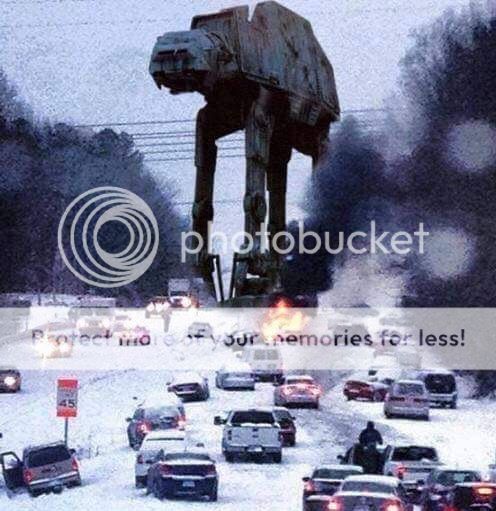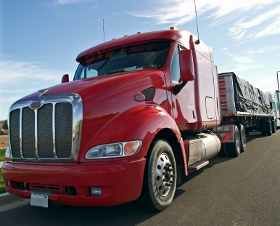Truckers, Help Me Make My Mind Up! Prospective Truck Driver Here!
Topic 9115 | Page 2

Daniel B's Year Diary I a good place to start to get an idea of what life will be like on the road. This is from TT's moderator who made it through the tough parts.
On you tube, Check out the channel RideWithB. This is a video journal of a kind, polite guy who ended up quitting due to the stresses on the road. Beware, parts of it are tough to watch. It made me think real hard before I decided to go forward and pursue this career.

Daniel B's Year Diary I a good place to start to get an idea of what life will be like on the road. This is from TT's moderator who made it through the tough parts.
On you tube, Check out the channel RideWithB. This is a video journal of a kind, polite guy who ended up quitting due to the stresses on the road. Beware, parts of it are tough to watch. It made me think real hard before I decided to go forward and pursue this career.
Wow. I have lost 12 hours to following those links! I was deeply invested in Daniel's diary, and it made me want to be on the road! He did a great job out there detailing things for us. I've been watching RideWithB for about 2 ours now and checking out his interior videos and tips and tricks. He also does a great job of detailing things for prospective truckers. A few of his truck tours have been pretty dirty though... but I guess that's life on the road!
I did have a few questions, though, after watching and reading, if you guys wouldn't mind answering!
Clocks: There's a 10 hour, 14 hour, 34 hour, 70 hour - and resets to boot! Is there a good link explaining these clocks, and what their functions are? It looks like the 14 hour
Tandems: I get that they are the axles; drive, steer, and trailer, but sliding them forward or backward? Is this automated? I understand this is to distribute weight evenly to ensure proper handling. What if you are too heavy on one or the other, but not overweight overall? Does that ever happen?
Routing: So the Qualcomm gives you a set of directions, the GPS gives you possibly another set, and the shipper/receiver give you another. Guessing at this point it's time to pull out the map and look at it, right? I'll admit I've not much used a map... maybe once or twice. Is this "easy" enough to learn? I've mostly relied on my GPS, but a truck GPS is not quite as accurate sometimes, correct? I guess that's one of my fears, getting lost and into a bad neighborhood, or stuck under a bridge, etc.
Fueling: I was reading Daniel's diary, and it seems that he fueled multiple times, but not fully, a day sometimes per the Qualcomm. Is this normal? If so, is it to keep fuel in the tanks, to keep weight up? I guess only having to drive a passenger vehicle that doesn't seem to make much sense to me (on the surface, anyway).
Emergencies: Let's say something happened at home and you were quite a ways away. Are there options, depending on severity, that could get you home? I guess that's up to each company, but just thinking out loud here!
Thanks for the answers, if any! I know I'm asking a lot of questions, but this would be the first "big move" in my career if I took the step. You guys definitely have a lot of knowledge here, so thank you for your patience!
Shipper:
The customer who is shipping the freight. This is where the driver will pick up a load and then deliver it to the receiver or consignee.
Tandems:
Tandem Axles
A set of axles spaced close together, legally defined as more than 40 and less than 96 inches apart by the USDOT. Drivers tend to refer to the tandem axles on their trailer as just "tandems". You might hear a driver say, "I'm 400 pounds overweight on my tandems", referring to his trailer tandems, not his tractor tandems. Tractor tandems are generally just referred to as "drives" which is short for "drive axles".
Tandem:
Tandem Axles
A set of axles spaced close together, legally defined as more than 40 and less than 96 inches apart by the USDOT. Drivers tend to refer to the tandem axles on their trailer as just "tandems". You might hear a driver say, "I'm 400 pounds overweight on my tandems", referring to his trailer tandems, not his tractor tandems. Tractor tandems are generally just referred to as "drives" which is short for "drive axles".
Qualcomm:
Omnitracs (a.k.a. Qualcomm) is a satellite-based messaging system with built-in GPS capabilities built by Qualcomm. It has a small computer screen and keyboard and is tied into the truck’s computer. It allows trucking companies to track where the driver is at, monitor the truck, and send and receive messages with the driver – similar to email.Dm:
Dispatcher, Fleet Manager, Driver Manager
The primary person a driver communicates with at his/her company. A dispatcher can play many roles, depending on the company's structure. Dispatchers may assign freight, file requests for home time, relay messages between the driver and management, inform customer service of any delays, change appointment times, and report information to the load planners.TWIC:
Transportation Worker Identification Credential
Truck drivers who regularly pick up from or deliver to the shipping ports will often be required to carry a TWIC card.
Your TWIC is a tamper-resistant biometric card which acts as both your identification in secure areas, as well as an indicator of you having passed the necessary security clearance. TWIC cards are valid for five years. The issuance of TWIC cards is overseen by the Transportation Security Administration and the Department of Homeland Security.
HOS:
Hours Of Service
HOS refers to the logbook hours of service regulations.OWI:
Operating While Intoxicated
Clocks: There's a 10 hour, 14 hour, 34 hour, 70 hour - and resets to boot! Is there a good link explaining these clocks, and what their functions are? It looks like the 14 hour
We have an excellent section for Learning The Logbook Rules in our High Road Training Program. Some of these rules can be pretty complex and tricky but knowing the logbook rules with today's electronic logbooks will certainly affect your paycheck. You can't just cheat now like you could back in the day using paper logs and just write down anything you'd like to. Today you have to really understand the rules and learn how to use them to your maximum advantage.
Tandems: I get that they are the axles; drive, steer, and trailer, but sliding them forward or backward? Is this automated? I understand this is to distribute weight evenly to ensure proper handling. What if you are too heavy on one or the other, but not overweight overall? Does that ever happen?
Moving your tandems is not automated. You will simply pull a lever on the trailer which will release the pins which lock the trailer tandems in place. Then you're free to move them forward or backward.
And yes, you will often be under 80,000 pounds but one of your sets of axles will be overweight. That happens on a regular basis which is exactly why you'll be moving your tandems. You're trying to get the weight balanced pretty closely across all sets of axles.
We also have an excellent section in the High Road called Truck Weight And Balance which will teach you all kinds of stuff about how to load cargo, how to distribute your weight evenly, how to calculate fuel burnoff, how to determine what percentage of the weight of your fuel is going on which sets of axles, and plenty more. It's all very practical everyday knowledge you'll need out there but the schools don't really tend to cover it because it's not part of the official testing.
CDL:
Commercial Driver's License (CDL)
A CDL is required to drive any of the following vehicles:
- Any combination of vehicles with a gross combined weight rating (GCWR) of 26,001 or more pounds, providing the gross vehicle weight rating (GVWR) of the vehicle being towed is in excess of 10,000 pounds.
- Any single vehicle with a GVWR of 26,001 or more pounds, or any such vehicle towing another not in excess of 10,000 pounds.
- Any vehicle, regardless of size, designed to transport 16 or more persons, including the driver.
- Any vehicle required by federal regulations to be placarded while transporting hazardous materials.
Logbook:
A written or electronic record of a driver's duty status which must be maintained at all times. The driver records the amount of time spent driving, on-duty not driving, in the sleeper berth, or off duty. The enforcement of the Hours Of Service Rules (HOS) are based upon the entries put in a driver's logbook.
Tandems:
Tandem Axles
A set of axles spaced close together, legally defined as more than 40 and less than 96 inches apart by the USDOT. Drivers tend to refer to the tandem axles on their trailer as just "tandems". You might hear a driver say, "I'm 400 pounds overweight on my tandems", referring to his trailer tandems, not his tractor tandems. Tractor tandems are generally just referred to as "drives" which is short for "drive axles".
Tandem:
Tandem Axles
A set of axles spaced close together, legally defined as more than 40 and less than 96 inches apart by the USDOT. Drivers tend to refer to the tandem axles on their trailer as just "tandems". You might hear a driver say, "I'm 400 pounds overweight on my tandems", referring to his trailer tandems, not his tractor tandems. Tractor tandems are generally just referred to as "drives" which is short for "drive axles".
OWI:
Operating While Intoxicated
New Reply:
New! Check out our help videos for a better understanding of our forum features

















Preview:
This topic has the following tags:
Becoming A Truck Driver Life On The Road Truck Driving Lifestyle







 TT On Facebook
TT On Facebook
If you've been successful in other areas/jobs, you'll likely be successful as a driver. Assuming you are trainable (which it sounds like you are), you are going to apply your strong work ethic and organizational skills to this job.
Keep in mind you'll be seeing much of the country you don't wanna see. Like trashy truck stops and warehouses, but that's just part of the deal. You can enjoy sunrises and sunsets (provided you don't stress yourself out worrying if there'll be a parking spot left for you) and some truly cool stuff. Hey, the other day I was driving through Ohio and I saw this weird looking building; it was the Longarberger Basket Company headquarters and it looks just like a picnic basket. Google it and you'll see. Same day I was driving along the interstate and there was the Pro Football Hall of Fame. Another day I got to watch sky divers, a hot air balloon and military jets went screamin' overhead from a nearby runway.
I've also been driving along and I look to the right and I'm staring down Magnolia Lane at The Masters in Augusta, GA. Other times I just enjoy seeing farmers working their fields in Wisconsin, Iowa and other places.
It's still a beautiful country we've been blessed with and whether you become a Truck Driver or not, I hope you get to enjoy it. Good luck!
Interstate:
Commercial trade, business, movement of goods or money, or transportation from one state to another, regulated by the Federal Department Of Transportation (DOT).